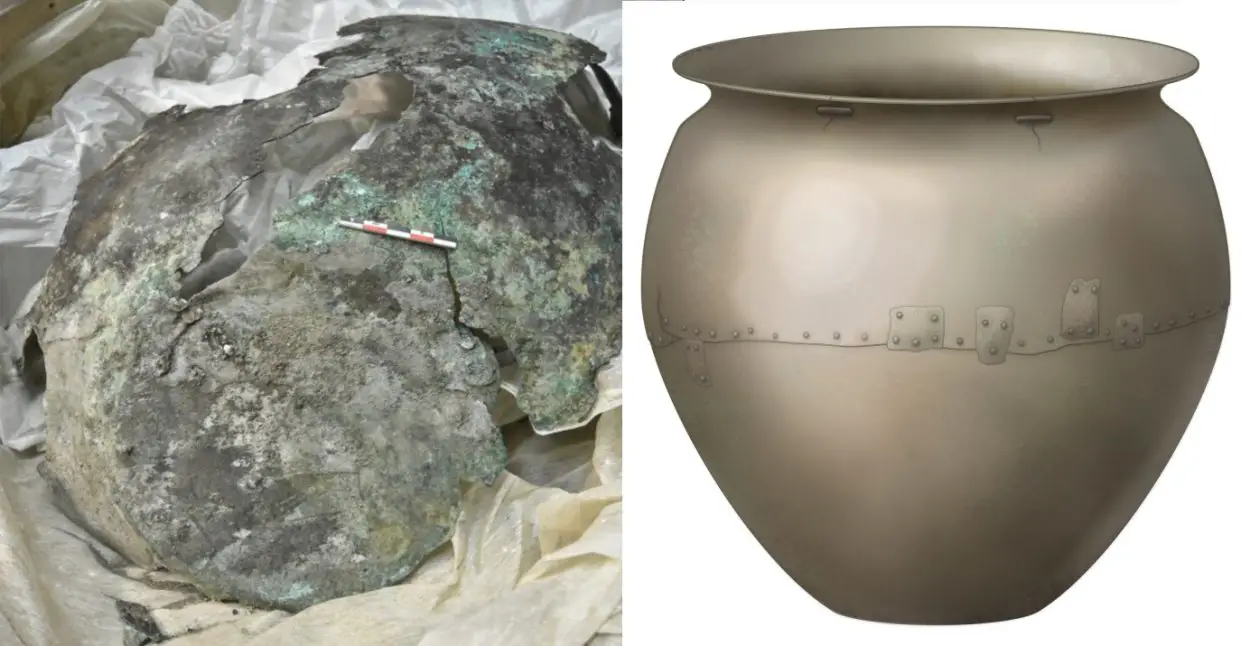For a significant period, archaeologists have been deducing the applications of ancient tools through written accounts and contextual cues provided by the creators.
However, when it comes to dietary customs, they have been required to speculate about the food consumed and the methods of its preparation.
Published in the journal iScience, a recent study examined protein remains extracted from antique cooking cauldrons. The study revealed that individuals from the Caucasus region consumed animals such as deer, sheep, goats, and bovines belonging to the Maykop era (3700–2900 BC).
“It’s really exciting to get an idea of what people were making in these cauldrons so long ago,” says Shevan Wilkin of the University of Zurich. “This is the first evidence we have of preserved proteins of a feast—it’s a big cauldron. They were obviously making large meals, not just for individual families.”
It has been understood by scientists that the fats conserved within ancient pottery and the proteins derived from dental calculus, which is the solidified mineral plaque on teeth, retain indications of the proteins ingested by people in ancient times.
In this research, the integration of protein analysis and archaeological insights delves into precise aspects of the cuisine prepared using these specific containers. Numerous metal alloys possess antimicrobial attributes, and it is due to this characteristic that proteins have been exceptionally well-preserved on the cauldrons. The microorganisms in soil that typically break down proteins on surfaces like ceramic and stone encounter resistance on metal alloys.
“We have already established that people at the time most likely drank a soupy beer, but we did not know what was included on the main menu,” says Viktor Trifonov of the Institute for the History of Material Culture.
The team gathered eight residue samples taken from seven cauldrons that were unearthed at burial sites within the Caucasus region. This area lies between the Caspian and Black Seas, stretching from Southwestern Russia to Turkey, encompassing present-day nations such as Georgia, Azerbaijan, and Armenia. They successfully extracted proteins originating from blood, muscle tissue, and milk. Among these proteins, the presence of heat shock protein beta-1 suggested that the cauldrons were employed in cooking deer or bovine (cattle, yaks, or water buffalo) meats. Furthermore, the recovery of milk proteins from either sheep or goats indicated that the cauldrons were used for dairy preparation.
Although the cauldrons show signs of wear and tear from use, they also show signs of extensive repair. This suggests that they were valuable, requiring great skill to make and acting as important symbols of wealth or social position—perhaps a little like Le Creuset or Mauviel saucepans today.
The researchers would like to explore similarities and differences in the residues from a wider range of vessel types. “We would like to get a better idea of what people across this ancient steppe were doing and how food preparation differed from region to region and throughout time,” says Wilkin. Since cuisine is such an important part of culture, studies like this one may also help us to understand the cultural connections between different regions.
The methods used in this study have shown that there is great potential for this new approach. “If proteins are preserved on these vessels, there is a good chance they are preserved on a wide range of other prehistoric metal artifacts,” says Wilkin. “We still have a lot to learn, but this opens up the field in a really dramatic way.”
https://www.cell.com/iscience/fulltext/S2589-0042(23)01559-6
Header Image Credit : iScience/Wilkin et al





